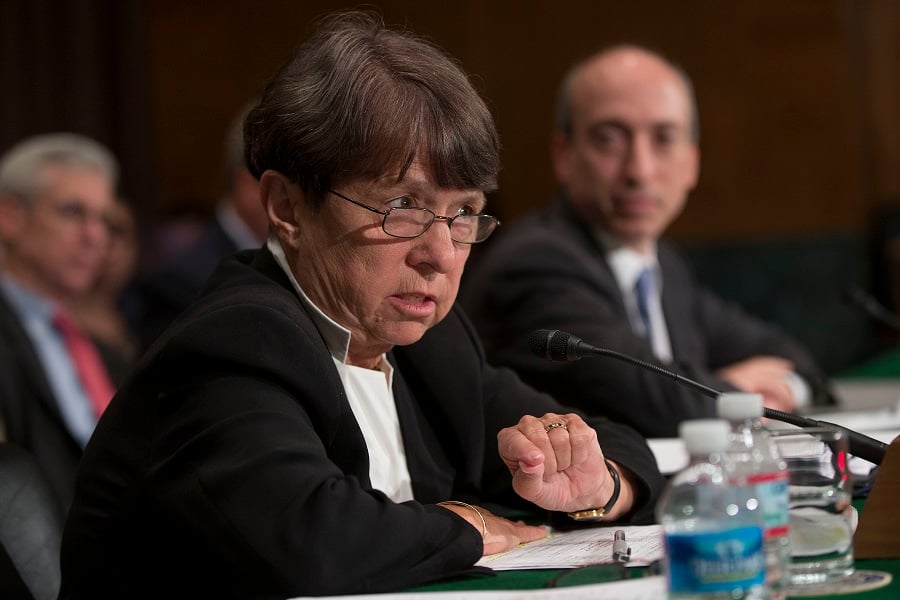The Securities and Exchange Commission proposed rules Tuesday to help ensure that mutual funds and exchange-traded funds can redeem shares when investors want to exit during times of market turmoil.
Under the rules, the funds would have to develop liquidity risk management programs, maintain a three-day liquid asset minimum and assess the liquidity of their holdings.
The proposal also would allow funds to implement so-called “swing pricing.” Funds could charge higher prices to shareholders making large purchases or redemptions above a certain limit, which would force the shareholders involved in the move to bear more of the transaction costs.
The rules are designed to reduce the likelihood of market disruptions caused by mutual funds and ETFs, which hold more than $18 trillion in assets.
“Together, these rules should greatly enhance funds' ability to manage their liquidity risks, strengthening our securities markets and better protect investors,” SEC Chairwoman Mary Jo White
said at a commission meeting. “The reforms will also improve the commission's ability to supervise funds and to monitor and address any liquidity risks that their activities may pose to the overall stability of the U.S. financial system.”
The five-member SEC unanimously approved releasing the proposal for a 90-day comment period, which will start after it is published in the Federal Register. The agency will review the comments and possibly modify the proposal before releasing a final rule.
(More: Read the SEC's fact sheet on liquidity risk management programs)
The initiative is part of the agency's
ongoing effort to address systemic risks posed by the asset management industry. In May, the SEC
proposed rules to increase data reporting and disclosures by funds and investment advisers. A future rule will address the use of derivatives in mutual funds.
Tuesday's proposal is the “next logical step to managing liquidity risk,” said Jay Baris, partner at Morrison & Foerster and chairman of the law firm's investment management practice.
It could result in improving investment advisers' ability to steer their clients toward safer funds.
“There will be more transparency into liquidity, which could affect their investment decisions,” Mr. Baris said.
Although all the SEC members supported putting the rule out for comment, some of them want to see it modified before being finalized.
Republican SEC members Daniel Gallagher Jr. and Michael Piwowar raised concerns about the three-day liquidity requirement and swing pricing.
Mr. Piwowar argued that funds should have a seven-day liquid asset minimum and that swing pricing should be accomplished through liquidity or redemption fees rather than through the fund's NAV.
“As is pointed out in the release, adopting a swing pricing threshold also could create the potential for shareholder gaming behavior because a fund's shareholders could attempt to time their purchases and redemptions based on the likelihood that a fund would adjust its NAV,” Mr. Piwowar
said at the SEC meeting.
Democratic Commissioner Kara Stein would like to see the rule expanded to address funds that use complex strategies utilizing alternative and fixed-income investments. Funds in this category, which tend to be less liquid than traditional mutual funds, grew from approximately $365 million to $334 billion in assets from 2005 to 2014.
“I am especially interested in hearing from commenters on whether we should consider tailoring regulation for the funds that we know present the most concern from a redeemability perspective,”
Ms. Stein said.







